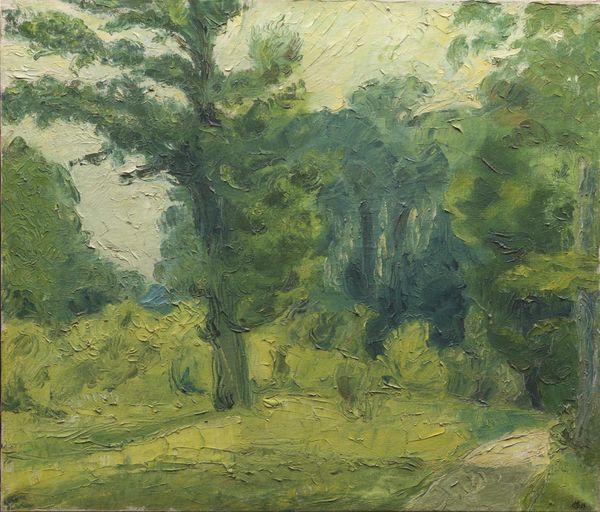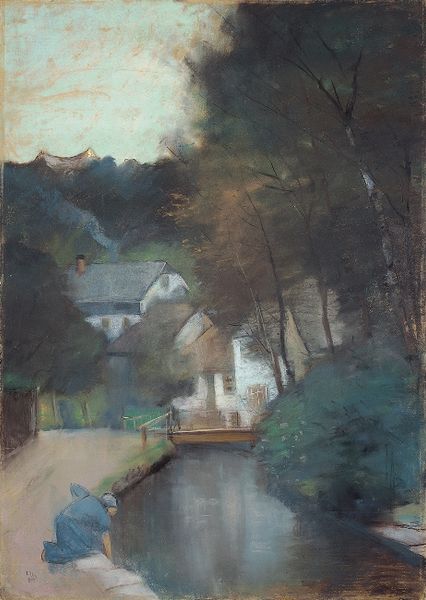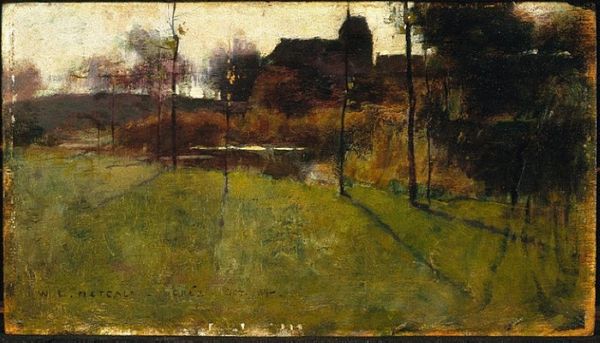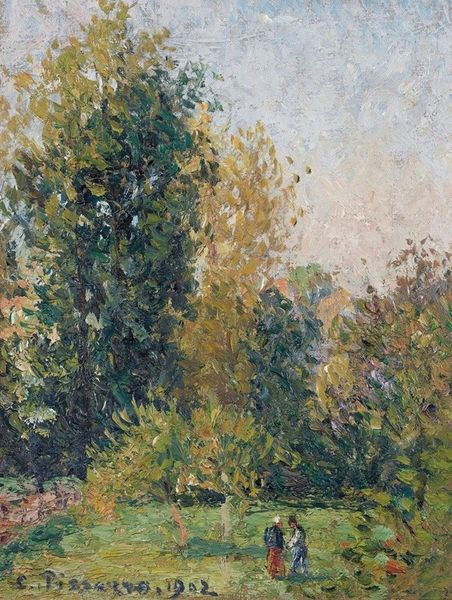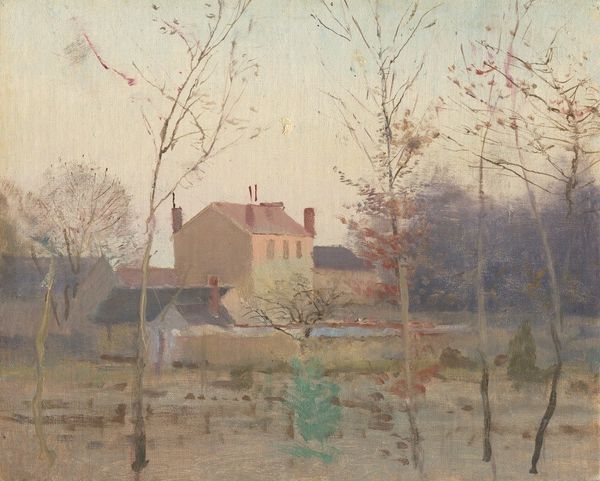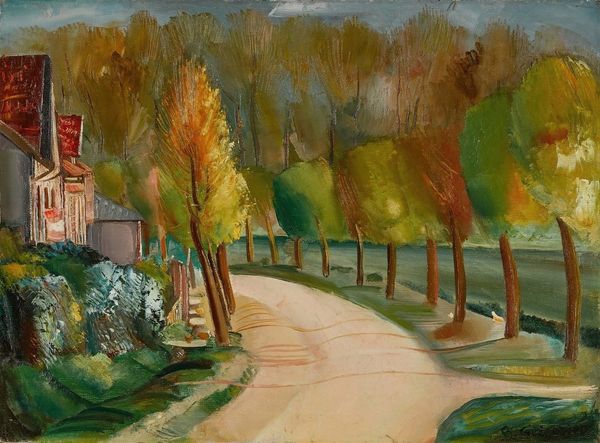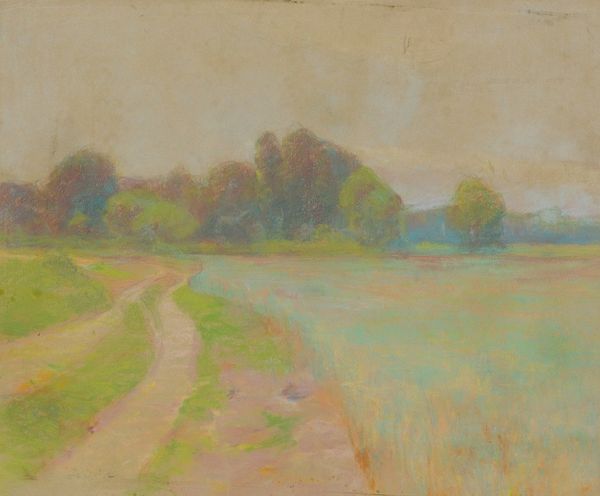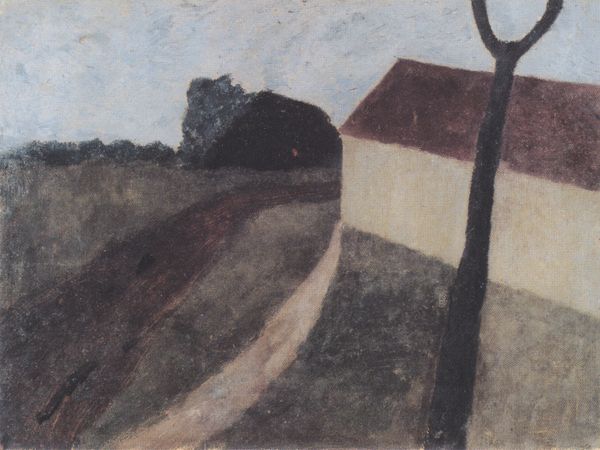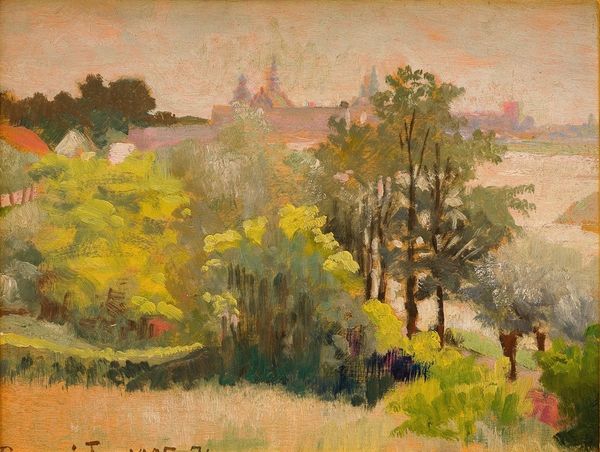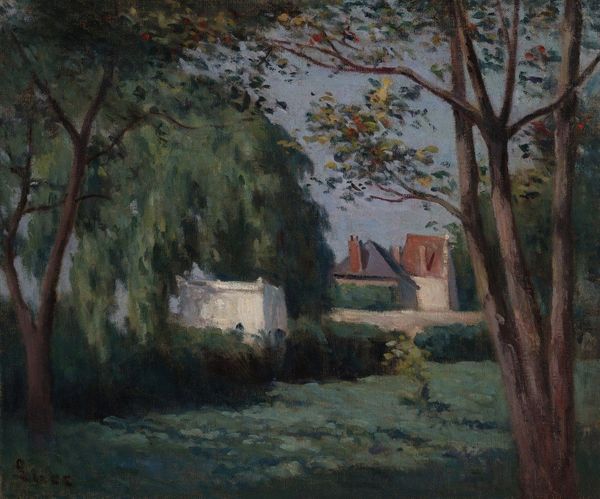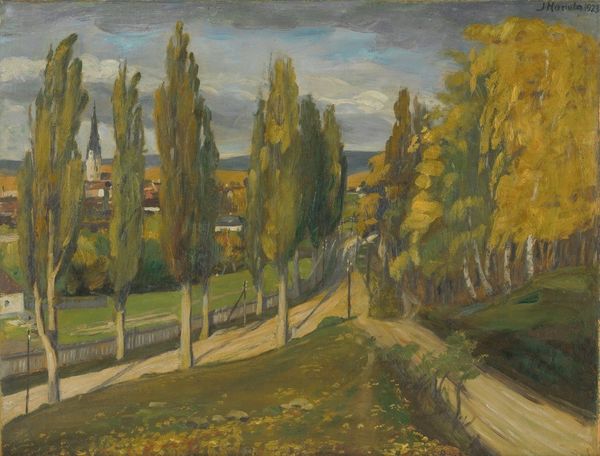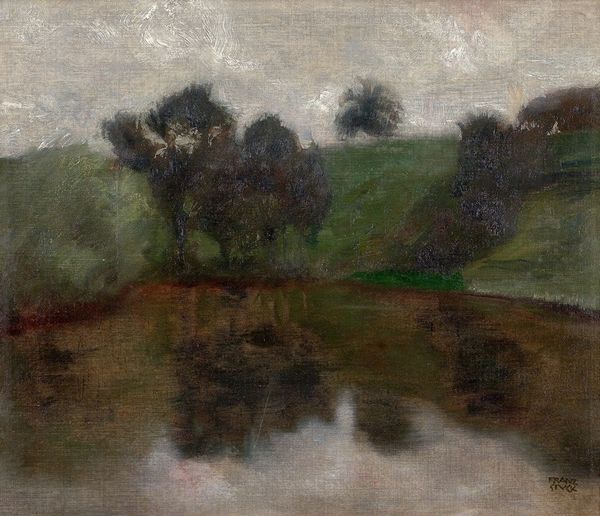
Dimensions: 30 cm (height) x 39.5 cm (width) (Netto)
Editor: Here we have Ludvig Find's "The Garden of Institution des sourds-muets," created in 1902 using oil on canvas. It’s a hazy landscape and strikes me as somewhat melancholic, almost like looking at a fading memory. What’s your interpretation of it? Curator: What stands out is its social context. Institutions like the "Institution des sourds-muets" - for the deaf and mute - were crucial social projects at the time, meant to integrate marginalized communities. But the title itself reveals the segregation within society at that moment. Editor: I hadn't considered that angle. How does Find's painting reflect these institutional efforts, or perhaps critique them? Curator: Notice the subdued palette and indistinct forms. Is Find offering a romanticized view, perhaps to soften a potentially harsh reality, or could it be hinting at the isolating effects of such institutions, despite their purported benevolence? Is it inclusive? Editor: That’s an interesting perspective. The winding path in the painting almost feels like it's leading *away* from the building. Does that hold significance for you? Curator: Absolutely! The path might represent the journeys – literal and figurative – these individuals undertake. Also the role art played in shaping perceptions of disability and social care at the turn of the century is also critical to reflect upon. How did these landscapes contribute to public awareness of institutions for the marginalized? Did it provoke discussions about care? Editor: It sounds like Find's work goes beyond a simple landscape, opening discussions about social inclusion, visibility, and the function of institutionalized care, which I had completely missed. Curator: Indeed! It reminds us that art doesn't exist in a vacuum; it actively participates in and shapes social dialogues. This one clearly needs more investigation!
Comments
No comments
Be the first to comment and join the conversation on the ultimate creative platform.

